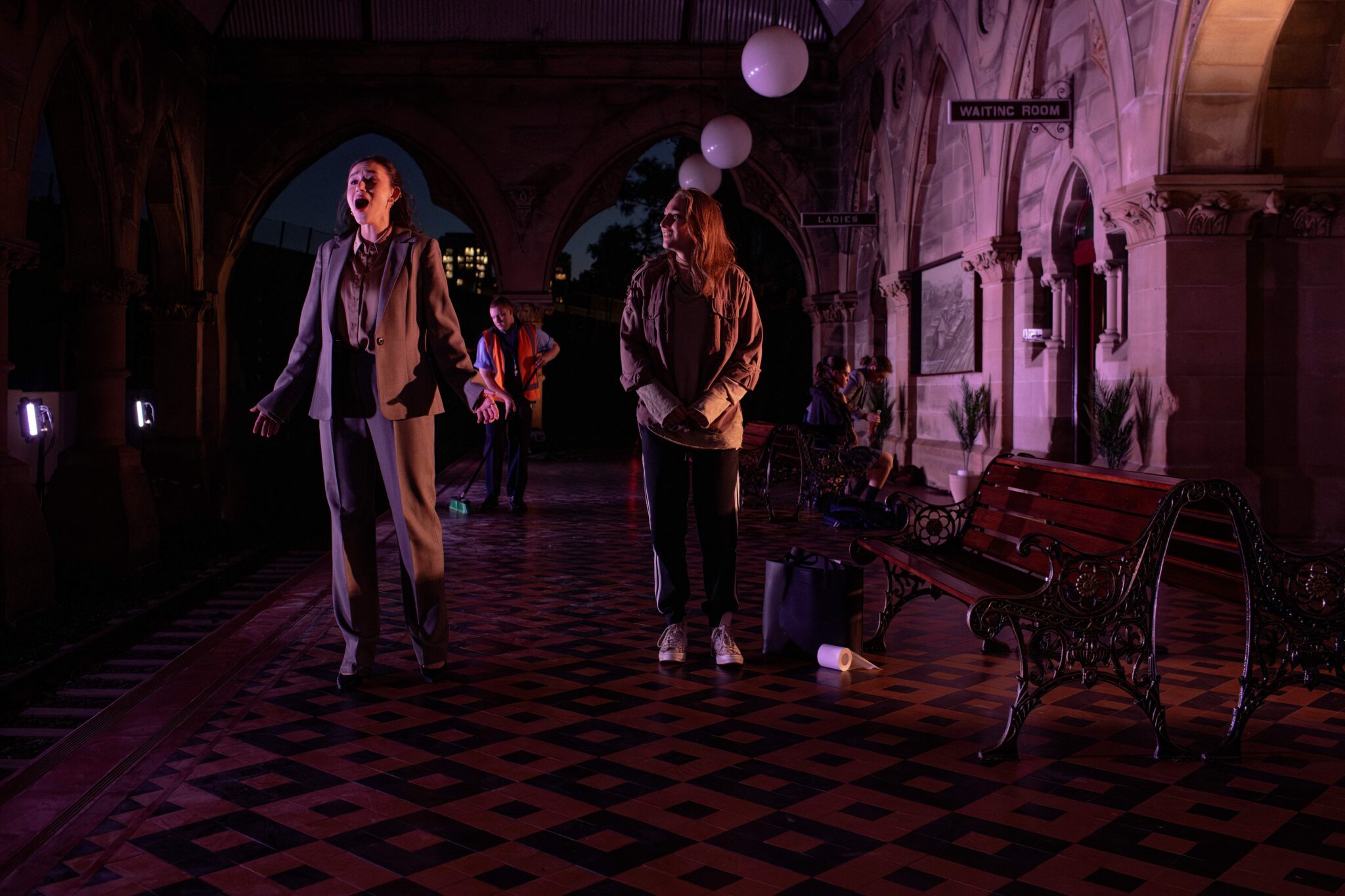History is a silent corpse that sits by the wayside of our times. It lies unannounced, whisked in its funeral dress, the gauze of invisibility.
Mortuary Station, near Chippendale, is one such relic, recessed into the past, and in relative disuse for over half a century. It once served as the terminus for funeral trains from rural areas but has now resigned to the role of backgrounding. I myself have passed by it on multiple occasions without a second look. Opera, too, could be considered outstripped; far from the popular charts, with no magnetic icon like Pavarotti left, its presence linked to upper-class tastes. But, despite this, or perhaps because of it, Track Works, a “site-specific pastiche opera” produced by Australian theatre company BBT, shakes off the cobwebs and imbues Mortuary Station with new life.
Following the lives of four Sydney commuters and one train station worker, Track Work’s narrative is composed mainly of operatic vignettes, with the lyrics of each piece translated and provided on a screen to the left of the stage – with some alteration, but “the gist” remains, assures performer Michael Kaufmann. Water-smooth voices deliver Czech, Italian, and French as trains to Central slip by the stage. The feeling of sitting in Mortuary station, watching Tangaras and Waratahs rush past on cables like leashed dogs while a lawyer (Anastasia Gall) sings of her wasted life as she tears pages from a folder of legal documents was, bluntly, fun as hell. The same can be said for any of the performers, whenever someone opened their mouth and opera came out, I was struck.
Maybe there’s also something about watching something in-situ, where the universal experience of catching the train is upheld as an artistic experience. The station, the brutal train delays, the school uniforms, the high-vis. These icons of the everyday are not transfigured, but superimposed, matching the intensity of each line sung. If the venue was a cloistered indoor theatre, I doubt it would feel near the same. Nor should it, the utilisation of the venue is a major strength of the performance. As a story, Track Works is a largely by-the-numbers medley of archetypes and plotlines, but it functions well enough to ground a performance that could otherwise be lost in the lofty heights of other operatic works. This intention was signaled by co-creator and producer Thomas De Angelis, who outlined one of the work’s goals as to bring opera from its upper-crust centric home.
At the end of the show, as the cast left the stage and the lights were dimmed, I returned to Mortuary station, in the middle of the night, with rain dulling the headlights of passing trains. But actually, I had not returned, it was Mortuary station that had ended its traipse in the land of the living. The pulsing of feet and music had subsided, and it was resuming its heritage-listed visage. But, for forty-five minutes it had had blood in its veins. Clemence Williams, Thomas De Angelis, Josephine Gibson, and the entirety of the Track Works team had lifted off its funereal shawl and replaced it with sound and light, vibrato ringing from its sandstone ribs.





